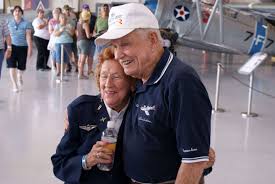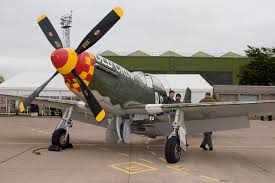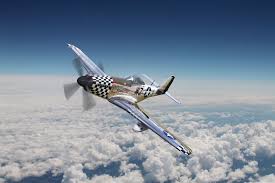
Brigadier General Clarence E. “Bud” Anderson, the last surviving triple ace pilot from World War II, peacefully passed away in his sleep on May 17 at the age of 102. With his demise, the aviation world mourns the loss of a courageous aviator whose life symbolized the valor and expertise of the Greatest Generation.

Born in Oakland, California on January 13, 1922, Anderson’s passion for flight ignited early, leading him to earn his pilot’s wings at Luke Field, Arizona, in 1942. Joining the U.S. Army Air Forces shortly after turning 20, Anderson’s aviation journey spanned from the skies over Europe during World War II to the battlefields of Korea and Vietnam.

Assigned to the esteemed 357th Fighter Group, also known as the “Yoxford Boys,” Anderson soared through 116 combat missions during World War II, achieving an extraordinary 16 aerial victories.

His iconic P-51 Mustang, “Old Crow,” became synonymous with his prowess in the air. Anderson was credited with shooting down 16 enemy aircraft by himself, with an additional quarter share in another, making him a revered “triple ace” in military parlance.

Anderson’s exemplary service earned him numerous accolades, including two Legion of Merits, five Distinguished Flying Crosses, the Bronze Star, 16 Air Medals, and the French Legion of Honor.

His post-war career saw him commanding an F-86 squadron in Korea and flying Republic F-105D fighter-bombers over Vietnam. In total, Anderson amassed more than 7,500 flying hours in over 130 types of aircraft, embodying the spirit of aviation excellence.

“We were blessed to have him as our father,” Anderson’s children, Kitty Burlington and Jim Anderson, said in a statement. “Dad lived an amazing life and was loved by many.”

In addition to his combat achievements, Anderson played a pivotal role as a fighter test pilot. His contribution to flight test operations at Wright-Patterson Air Force Base in Ohio showcased his technical acumen and dedication to advancing aviation technology.

After retiring from the Air Force in 1972, Anderson continued his aviation journey by managing a test facility at Edwards Air Force Base under McDonnell Aircraft Company until his full retirement in 1984.

Anderson’s legacy extended beyond his military service. He was an active member of the air show and warbird communities, sharing his wartime experiences and inspiring countless enthusiasts. His autobiography, “To Fly and Fight: Memoirs of a Triple Ace,” co-written with Joseph P. Hamelin and published in 1990, remains a testament to his extraordinary life and contributions to aviation.

His enduring legacy was celebrated during the Arsenal of Democracy Flyovers commemorating the end of World War II.

“Bud Anderson was a true American hero who selflessly served our nation with distinction and honor,” remarked Pete Bunce, President and CEO of the General Aviation Manufacturers Association (GAMA). “Brig. Gen. Anderson will forever be remembered for his bravery and sacrifice, which humbly exemplified America’s Greatest Generation.”

Anderson’s passing leaves a profound void in the aviation and veteran communities. “We are saddened by the news of Brig. Gen. Anderson’s passing. He was truly one of America’s greatest heroes,” said Hank Coates, President of the Commemorative Air Force (CAF).

In the twilight of his life, Anderson was promoted to brigadier general in a ceremony that underscored his lifetime of service and dedication. His wife, Eleanor, preceded him in death in 2015, and he is survived by his two children, four grandchildren, and five great-grandchildren.

As the nation bids farewell to one of its most distinguished aviators, Anderson’s legacy endures in the annals of military history and in the hearts of those he inspired. “His recollections of his career in the military and especially of his time as a P-51 pilot in World War II have educated, inspired, and entertained tens of thousands,” said John Cudahy, President of the International Council of Air Shows.
Relevant articles:
– Honoring General Bud Anderson | The Gridley News , Gridley Herald, 05/24/2024
– Bud Anderson, last surviving World War II triple ace pilot, dies at 102, CBS News, 05/22/2024
– Bud Anderson, last triple ace pilot from World War II, dead at 102, WPXI Pittsburgh, 05/22/2024

